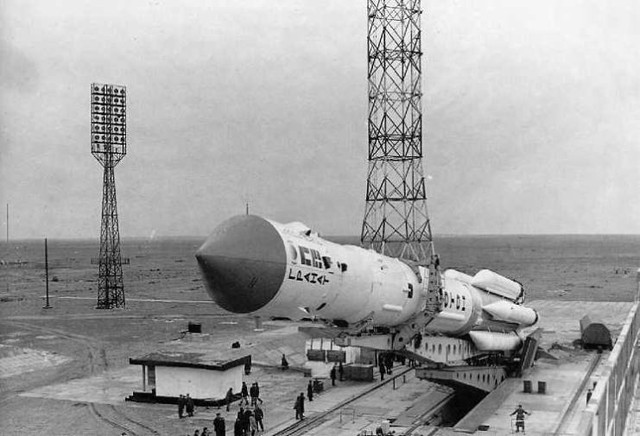November 20, 1998 - The first module of ISS International Space Station flies into space
This is considered an important milestone marking a new era of cooperation in space technology between the two great powers Russia and the United States after decades of confrontation.
November 20, 1998 - Zarya m odule first of the International Space Station flew into space
With the name Zarya - meaning Dawn in Russian, this is the module of the function of cargo transport function (Functional Cargo Block). It was built by Russia under the cost investment of the United States, a highlight of the borderless scientific significance of the ISS International Space Station . On November 20, 1998, Zarya entered an immense space outside of Earth under the support of its own proton Proton-K made from Russia's Baikonur Cosmodrome space airport.

This is considered an important milestone marking a new era of cooperation in space technology between the two great powers Russia and the United States after decades of confrontation. After staying in orbit for weeks to December 7, 1998, Zarya was connected to the Unity module by the shuttle Endeavor . The Unity module was launched into orbit by the Endeavor ship on December 4 earlier. The module is made by Moscow's Khrunichev Federal Research and Production Space Center under a contract with Boeing.
Zarya's main task is to adjust the direction for the station, ensure ground communication as well as provide energy for the Unity module before these functions are handed over to the Zvezda logistics module, intended to be uploaded. orbit 6 months later. However, due to a delay, it was only two years later that the third module of the ISS was launched.Zvezda is a logistics module (service module) that provides the first living conditions to set the stage for the first crew to live on the station. Currently, the main function of Zarya is to store goods as well as the corridor connecting Russian parts of the ISS.

Zarya has a length of 12.6m, its largest width is 4.1m and weighs 19.323kg. Its expected operating time is 15 years, but it may be long when Zarya is still operating normally. This module receives energy from 2 solar panels with dimensions of 10.7m x 3.4m. Each plate is covered by a glass plate with a photoelectric switch layer. These solar panels are released after the module is put into orbit, about 90% of the energy is absorbed from the surface towards the Sun, the remaining 10% is on the other surface obtained from the light. The sun's light is reflected by the Earth. Energy is fed into 6 nickel-cadmi electric storage units in the power supply system and this system can provide an average power of about 3 kW of electricity.
In the first phase of the ISS project, this system is used to power two modules Zarya and Unity. Later, when the Zvezda module was added, the entire system was transferred to Zarya and Zvezda was responsible for the energy supply. In addition, 16 external Zarya gasoline tanks can hold up to 5.4 tons of fuel. The system's directional adjustment system consists of 24 large thrust steering thrusters and 12 small thrusters, two large engines that can be used to raise the station's height as well as to change the trajectory before Zvezda is assembled into the station . Its docking ports can allow for assembly with Soyuz transport ships as well as all unmanned Progress transports from Russia. This module has been modified so that it can be fueled by the Progress transport vessel every time this vessel lands on the module's bottom assembly port.
- Looking back at the ISS space station after 15 years of operation
- December 4, 1998 - The International Space Station receives the first module assembled by the United States
- Russian space station will replace the US ISS global surveillance
- China plans to launch Tiangong Space Station similar to ISS by 2020
- Discovery into the International Space Station
- International Space Station increased the orbit by 1.5km
- 2011: China launched the first module of the space station
- By 2022, China will have the first international space station
- Astronauts bring cosmic flies to Earth
- The International Space Station lSS faces the risk of being abandoned
- China launched the first module for the space station
- International space station is 10 years old
 Biography of hero Vu A Dinh
Biography of hero Vu A Dinh History of hematology
History of hematology Who is Mr. Tam Da 'Phuc-Loc-Tho' and what does it mean?
Who is Mr. Tam Da 'Phuc-Loc-Tho' and what does it mean? Unbelievable facts about the history of the oil and gas industry: Gasoline used to be cheaper than water, so abundant that it had to be dumped into the river...
Unbelievable facts about the history of the oil and gas industry: Gasoline used to be cheaper than water, so abundant that it had to be dumped into the river...